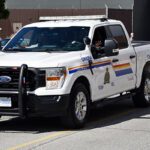Home »

Thank you is not enough
By Ian Cobb
Now that (knock on wood) it seems as though the worst is behind us in terms of wildfires for this season, it is high time we passed along our thanks and gratitude to those who toiled to keep our communities safe.
To the BC Wildfire Service and Parks Canada personnel and the helicopter and water bomber pilots; to local fire departments; RCMP; to firefighters who arrived from elsewhere in B.C. and Mexico; to local businesses that pitched in; to concerned residents and neighbours who helped out others in need – ‘good job and thanks’ just do not seem enough.
To the BC Wildfire Service crews: the time and effort, dangers faced, the skills exhibited and the sacrifices made, are deeply appreciated by all East Kootenay and B.C. residents. Yes, it is your jobs to keep us safe but that does not mean we should not be thankful or appreciative for how proficiently and professionally you conducted yourselves.
It must be noted that the Regional District of East Kootenay once again shone during this crisis, as it did in 2003. Loree Duczek and company’s efforts to keep us all informed – every day stretching back to the beginning of July – were yeoman-like.
Many people have basically missed the smoky summer of 2017 because they were up to the eyebrows in wildfire emergency work. May you all now find some much-deserved down time.
There is another kudo that must be passed along.
?aqam band council and City of Cranbrook officials earlier this year struck an agreement whereas Cranbrook Fire and Emergency Services’ coverage area was expanded to include the neighbouring community. That agreement, simply put, likely saved several dozens of homes and possibly lives.
We would also like to take this opportunity to thank residents for providing e-KNOW with so much important information and photographs during this crisis, helping us to provide sharper pictures about what was going down around us all.
We all live here because we love the country and we were all basically deprived of our precious escapes this summer; in turn, many of our tourism businesses took it on the chin, too.
Regional residents need to be thanked for obeying the open fire, road and ATV restrictions that were put in place for all our safety.
All it takes is one fool to ignite a disaster but aside from only a few instances over more than two months of crisis, our population, and our visitors, did not make things worse.
The summer of 2017 will be remembered as another time we dodged the wildfire bullet; as no community was impacted beyond some evacuation orders and alerts.
Not since 2003 have we witnessed such an explosion of wildfires in our woods in the East Kootenay.
As fire season continues to burn, it is likely this has been a worse fire year than 14 years ago in this region. That was a fire season that opened a great many eyes to the fact that all our communities are urban islands surrounded by a sea of forest.
It is now official that British Columbia has experienced its worst fire season on record; and again, it ain’t over til it’s over.
In conclusion, it is still abundantly clear that our provincial government is lagging behind in support for wild-land firefighting efforts (see also: BC Wildfire Services needs much greater financial resources).
Numerous wildfires exploded in size that became threats to communities such as Canal Flats, Elkford, Moyie,?aqam, Newgate and Fort Steele. The Kenow Mountain fire that began in the Kishinena drainage west of Waterton Lakes National Park, blasted into the park and only great firefighting efforts and luck spared the historical Village of Waterton – perhaps one of the most beautiful places in Canada.
The Verdant Creek wildfire, the longest burning in the region, could just have easily rampaged toward Sunshine Village and further into the Bow Valley.
All that said, we urge the B.C. provincial government and the federal government to immediately start beefing up resources for firefighting agencies.
Fire seasons seem to be cyclical; the past three in this region – 2017, 2003 and 1985. While that is a small sample, it appears that the cycle is shrinking in terms of regularity. But it might give us time to bolster the army we need to battle the fires of the future. I haven’t even mentioned the global warming trend, where hottest year records keep getting broken.
Throughout this piece I have only focused on the East Kootenay, which did not get hit as hard as the Cariboo or places in the Okanagan.
B.C. needs more resources to put toward ‘heavy artillery’ needed in the battles to save communities. We need more ‘slam down’ options in order to better preserve the safety of our firefighters and communities when a wildfire threatens.
This is in no way a criticism of BCWS or its firefighters. Just as Canadian soldiers did in the First and Second World Wars, you made the most of what you had to use and you won.
Over to you Premier John Horgan. Even the Lower Mainland could be obliterated by a wildfire, so take heed. This isn’t just a worry beyond Hope.
And over to you Prime Minister Justin Trudeau. You claim to love the Kootenays. We could use some funding love back.
Our communities have come terrifying close to the Fort McMurray nightmare once again, as we did in 2003 and 1985. Our local fire departments do their part, as do the municipalities, the RDEK and community groups in terms of educating people about such things as interface preparation.
It all comes down to money; our money. All we ask as citizens is that senior levels of government spend our money wisely.
Enhancing our ability to quickly knock down growing fires that pose threats to communities, by ensuring the tools and staff are in place, is spending our money wisely.
Lead image by Chad St. Pierre Photography
– Ian Cobb is owner editor of e-KNOW








